10 Most Sustainable Athleisure Brands: The Conscious Consumer’s Guide
Affiliate Disclosure
Hey fellow impactful ninja ?
You may have noticed that Impactful Ninja is all about providing helpful information to make a positive impact on the world and society. And that we love to link back to where we found all the information for each of our posts.
Most of these links are informational-based for you to check out their primary sources with one click.
But some of these links are so-called "affiliate links" to products that we recommend.
Why do we add these product links?
First and foremost, because we believe that they add value to you. For example, when we wrote a post about the environmental impact of long showers, we came across an EPA recommendation to use WaterSense showerheads. So we linked to where you can find them. Or, for many of our posts, we also link to our favorite books on that topic so that you can get a much more holistic overview than one single blog post could provide.
And when there is an affiliate program for these products, we sign up for it. For example, as Amazon Associates, we earn from qualifying purchases.
What do these affiliate links mean for you?
First, and most importantly, we still only recommend products that we believe add value for you.
When you buy something through one of our affiliate links, we may earn a small commission - but at no additional costs to you.
And when you buy something through a link that is not an affiliate link, we won’t receive any commission but we’ll still be happy to have helped you.
What do these affiliate links mean for us?
When we find products that we believe add value to you and the seller has an affiliate program, we sign up for it.
When you buy something through one of our affiliate links, we may earn a small commission (at no extra costs to you).
And at this point in time, all money is reinvested in sharing the most helpful content with you. This includes all operating costs for running this site and the content creation itself.
What does this mean for me personally?
You may have noticed by the way Impactful Ninja is operated that money is not the driving factor behind it. It is a passion project of mine and I love to share helpful information with you to make a positive impact on the world and society. However, it's a project in that I invest a lot of time and also quite some money.
Eventually, my dream is to one day turn this passion project into my full-time job and provide even more helpful information. But that's still a long time to go.
Stay impactful,
Amid growing concerns about the textile industry’s environmental impact, there is pressure to find greener clothes for your wardrobe, from work blazers to streetwear yoga pants. Unfortunately, fashion greenwashing makes it harder for you and all other consumers to figure out which clothing brands offer the most eco-friendly garments. So, we had to ask: Which are the most sustainable athleisure brands?
The most sustainable athleisure brands are Girlfriend Collective, MATE the Label, and Adidas by Stella McCartney, which opt for natural and recycled materials that are low-impact and high-performing while striving for circularity. Also, Wolven and PANGAIA reduce carbon emissions and textile waste.
Whether you are searching for some perfectly fitting high-waisted leggings or some versatile trainers to add to your wardrobe without negatively impacting the soil, the water, the animals, and other people, there is a brand for you. So, let’s keep reading to learn more about the most sustainable athleisure brands and how they ensure sustainable, ethical practices.
Here’s How We Selected the Most Sustainable Athleisure Brands
At the crossroads between sports and fashion, athleisure clothing can easily fall into the gray area of sleek yet seasonal and fast fashion. As athleisure gains popularity, many brands have entered the market to churn out versatile sportswear that might not be sustainable at all.
“Sustainable: The ability to be maintained at a certain rate or level | Avoidance of the depletion of natural resources in order to maintain an ecological balance”
Oxford Dictionary
The brands on this list were chosen based on their commitment and actions to promote sustainable practices while reducing the environmental impacts of the textile industry.
They are transparent about their materials, processes, and workforce management within their supply chain.
Some brands focus their efforts on reducing waste and optimizing natural resources while others strive to reduce the carbon footprint of their clothes.
All of these brands share the commitment to reshape the textile industry toward a more sustainable and Earth-friendly sector.
These Are the 10 Most Sustainable Athleisure Brands
Most Sustainable Athleisure Brands
Overall, these athleisure brands are sustainable. Yet, they take various approaches to reduce environmental impacts and uphold ethical standards. Let’s dive into each brand and find out more.
Girlfriend Collective: Essential and Timeless Athleisure Made Out of Recycled Materials

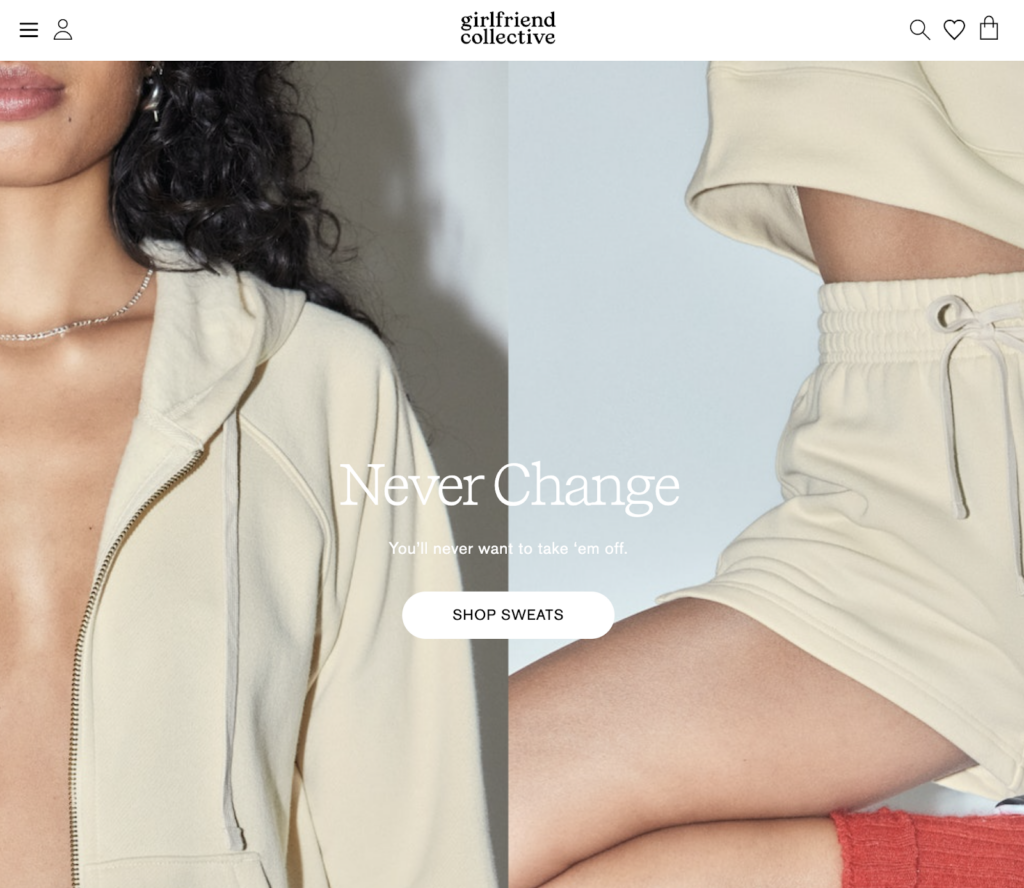
“We make everything locally in small batches to make sure we don’t have a negative impact on the environment.”
Girlfriend Collective
🌎
How do they ensure their sustainability?
Girlfriend Collective’s sustainability efforts start with using recycled and recyclable textile and packing materials. Their clothes are made from recycled materials such as post-consumer water bottles, fishing nets retrieved from the seas, fabric scraps, and other waste. On top of that, their packaging is 100% recycled and recyclable. After their clothes are dyed, all the wastewater is sent to a treatment plant 100 feet away. Treated water that meets safety standards is released into the waterway, while mud dye is donated to a pavement facility to be turned into paving stones. Additionally, they help prevent microfiber release with a branded microfiber filter. Their program “Recycle. Reuse. Regirlfriend.” collects old Girlfriend Collective compressive leggings and upcycles them into new pieces that can be worn again and again, reducing waste while moving toward a more circular fashion model. Lastly, Girlfriend Collective partners with EcoCart to provide a carbon-neutral option for all orders placed on their site to offset the carbon footprint of their products.
🌐
How do they ensure their ethics?
Girlfriend Collective’s facilities are fully certified by Social Accountability International – SA8000. An SA8000 certification guarantees no forced or child labor, safe working conditions, and the right to unionize. They also ensure all workers in their supply chain are paid fair wages and provided with free lunch and guided exercise breaks.
🤝
Are they part of any giving-back programs?
Girlfriend Collective is not known to be part of any giving-back programs.
🛍️
What is their product range?
- Best for: womenswear
- Product range: dresses, hoodies, sweatshirts, athleisure, sportswear, maternity wear, tops, blouses, T-shirts, stockings, tights, shorts, lingerie, plus-size
- Price range: $$$
- Size range: 2XS–6XL
MATE the Label: Clean From Seed to Skin

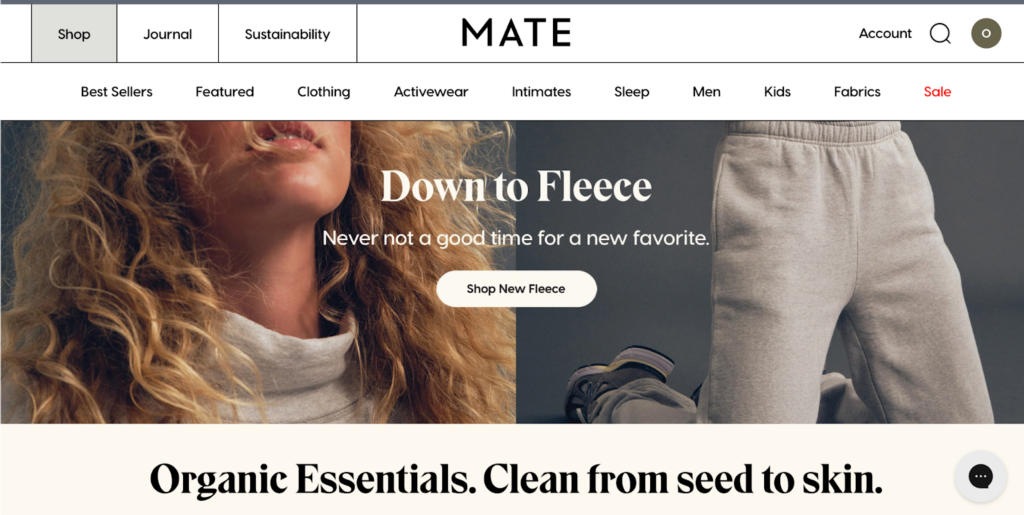
“To provide people everywhere with essentials that are clean from seed to skin.”
MATE the Label
🌎
How do they ensure their sustainability?
MATE the Label ensures sustainability by sourcing low-impact fibers, reducing carbon footprints, and recycling. Specifically, they opt for yarns based on plant fibers, including linen, hemp, and climate-beneficial cotton. Furthermore, they use non-toxic dyes to color their apparel. Regarding their carbon footprint, MATE the Label manufactures locally (within 15 miles of their office) to reduce transportation emissions. The brand diverts their textile waste (pre- and post-consumer) into making new products. They also have B Corporation and Climate Neutral certifications.
🌐
How do they ensure their ethics?
MATE the Label has a Code of Conduct covering some ILO Four Fundamental Freedoms principles. Specifically, they do final production in US factories where they had banned, since day 1, the piece rate pay—a practice that often leads to wages below minimum wage and unsafe working conditions. They commit to creating safe, comfortable, and fair working environments for everyone in their supply chain, including farmers, garment workers, and recyclers. They also make regular visits to their suppliers.
🤝
Are they part of any giving-back programs?
In 2021, MATE the Label donated 1% of sales to nonprofit partners that are committed to saving the planet. On Giving Tuesday in 2021, they upped the donation from 1% of every purchase to 5%. Since their partnership with BEAM Impact, MATE the Label’s consumers can choose to which organization the donations of their order should go to.
🛍️
What is their product range?
- Best for: minimalistic, versatile clothes for women
- Product range: sweaters, dresses, pants, hoodies, sweatshirts, maternity wear, blouses, T-shirts, jumpsuits, underwear
- Price range: $$
- Size range: XS–XL
Adidas by Stella McCartney: Elevated Athleisure That Is Kinder To Mother Earth
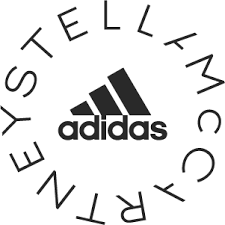
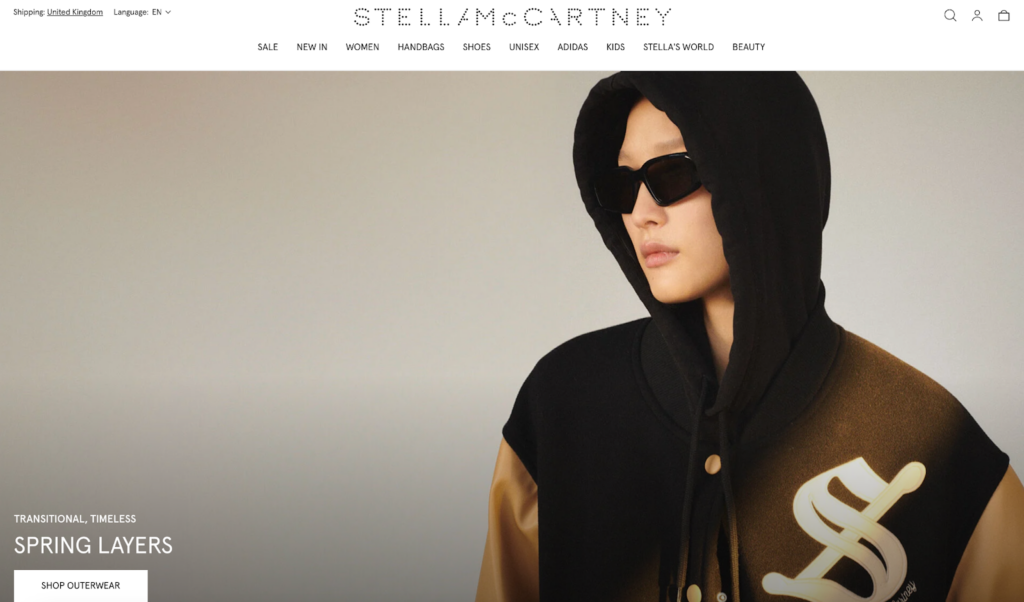
“We are committed to being an ethical, modern and honest company without compromising on luxury or quality.”
Stella McCartney
🌎
How do they ensure their sustainability?
Stella McCartney ensures sustainability by making use of the most cutting-edge and progressive materials that aim to reduce the impact on the planet and are always cruelty-free while following the principles of circularity. They use a medium proportion of eco-friendly and innovative materials, including GOTS-certified organic cotton, low-impact plant-based alternative materials (BananaTex®, VEGEA, Mylo™, MIRUM®), and recycled (synthetic) fabrics. For example, the TruePace Running All-in-One piece in the Adidas by Stella McCartney athleisure collection is made from 100% recycled materials, using advanced AEROREADY technology to keep wearers cool and dry while running. Further down the life-cycle, Stella McCartney employs technological advances to trace their products, lower their manufacturing impact, and increase their circularity. Additionally, they exclusively use paper that is either FSC-certified or made from at least 50% recycled content in their packaging. In 2014, the brand launched Clevercare—a garment labeling system covering five simple areas of clothing care: washing, temperature, drying, ironing, and dry cleaning to help extend the life of garments, decrease the number of pieces that end up in landfill, and reduce life-cycle environmental footprint.
🌐
How do they ensure their ethics?
Stella McCartney commits to transparency across supply chains through diligent reporting, measuring, and tracking. Stella McCartney is a member of the Ethical Trading Initiative (ETI), a human rights organization driving force in ethical trade. They also trace most of their supply chain. Additionally, Stella McCartney uses lambswool and sheep wool certified with Responsible Wool Standard, appropriately addressing the welfare of sheep (and their calves) and the land they graze on.
🤝
Are they part of any giving-back programs?
Stella McCartney partners with and supports many charities, including but not limited to BioPlanet, Million Trees Miami, Naked Heart Foundation, Meat Free Monday, and Sea Shepherd.
🛍️
What is their product range?
- Best for: womenswear, menswear, kidswear
- Product range: shirts, skirts, denim, sweaters, swimwear, dresses, pants, jackets, blazers, hoodies, knitwear, tops, blouses, T-shirts, underwear, socks, shorts, jumpsuits, playsuits, shoes, accessories, plus-size
- Price range: $$$
Wolven: Multifunctional Athleisure Made From Recycled Bottles


“Sustainability to us means every decision we make is rooted in our intention to protect our planet and create a more equitable and Earth-centered future for all.”
Amanda Lapham, Co-founder of Wolven
🌎
How do they ensure their sustainability?
Wolven ensures their sustainability by sourcing a high proportion of low-impact fabrics. Specifically, all of their 2022 swimwear and athleisure is made with 84% recycled polyester fabrics reclaimed from discarded plastic water bottles. Their recycled fabrics are certified with the Global Recycled Standard and OEKO-TEX® STANDARD 100. Additionally, they design their clothes to be reversible and multifunctional so consumers can do more and buy less. Regarding their climate impact, Wolven is certified Climate Neutral for reducing and offsetting their carbon emissions. They also reduce their impact by using emission-free renewable energy in the supply chain and at their office, opting for sea freight shipping over air freight, and recycling packaging materials to reduce waste. Regarding the necessary emissions, they compensate by investing in projects in wind energy and reforestation. Lastly, they further their commitment to circular fashion beyond using recycled material with their resale program, Wolven Pre-Loved.
🌐
How do they ensure their ethics?
Wolven only traces part of their supply chain. Their manufacturing partner is based in China and assessed by Intertek as conforming to the requirements of the Workplace Conditions Assessment.
🤝
Are they part of any giving-back programs?
Wolven gives back 1% of their annual revenue to nonprofit organizations. For example, each purchase from their Neutral Collection gives back to Climate Neutral through their 1% for the Planet membership. They also partner with CleanHub to organize events to pick up plastic bottles and clean up places like beaches, rivers, and canals.
🛍️
What is their product range?
- Best for: womenswear, menswear
- Product range: one-piece swimwear, bikinis, tops, tees, sweatshirts, leggings, flares, shorts, joggers
- Price range: $$
- Size range: XS–XL
PANGAIA: Comfort-Focused Clothing Made Sustainably With Innovative Textiles
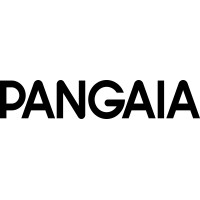
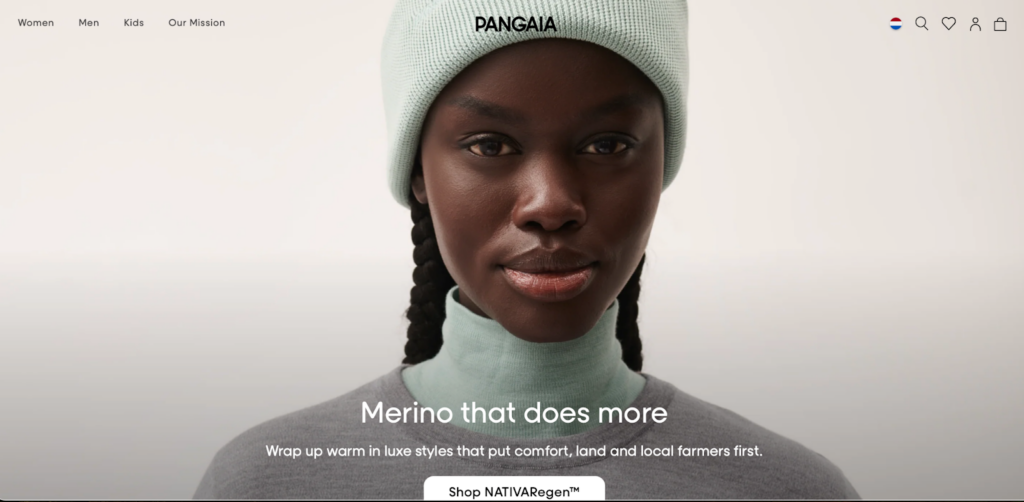
“ Every product we create is born from science and purpose, each solving an environmental problem of the industry. ”
PANGAIA
🌎
How do they ensure their sustainability?
PANGAIA ensures sustainability by diversifying materials options and shifting toward circular systems in which they regenerate nature, design out waste and pollution, and keep products and materials in use. Regarding sourcing materials, they opt for low-impact materials from nature and introduce new and lower-impact alternatives when possible. PANGAIA established their Preferred Material List (PML), which is diligently assessed based on a variety of criteria, including end-of-life pathways, visibility of the supply chain and raw material inputs, LCA results, certifications, chemical and water intensity, recycled and diverted waste streams, geographical provenance, end-use of the material, and performance against conventional alternatives. In 2022, 29% of PANGAIA’s collections were made with the top two most sustainable materials on this list, which includes natural fabrics made fully with organic cotton, regenerative cotton, organic linen, organic hemp, organic kapok, regenerative cashmere, and recycled cashmere. They also make use of innovative materials to replace high-impact traditional fabrics, for example, plant-based, ethically-sourced FLWRDWN™ to replace goose and duck down, FRUTFIBER™ to replace conventional cotton, or bio-based material MIRUM® to replace animal and synthetic leather. Further down the life-cycle in the manufacturing stage, PANGAIA applies innovative treatments to reduce waste and water use. These include AIR INK®, miDori® bioWick, and the bioengineered dye technology COLORFIX.
🌐
How do they ensure their ethics?
PANGAIA binds suppliers in a Code of Conduct that covers all of the ILO’s Four Fundamental Freedoms principles. They also make statements regarding Diversity and Inclusion, Modern Slavery, Child Labour & Young Workers Policy, and Human Rights Policy. They trace most of their supply chain, including all of the final stages of production. In 2022, they extended their transparency by mapping and publishing their Tier 1 subcontractors and Tier 2 suppliers while having 95% of their suppliers audited by a third party.
🤝
Are they part of any giving-back programs?
PANGAIA has been part of various philanthropic programs since their inception. They plant a mangrove tree for every product sold. PANGAIA is a member of 1% for the Planet, meaning that with every product you buy from PANGAIA, a sum is going to support the planet in one way or another. For example, through their partnership with Milkywire, PANGAIA launched two grassroots funds, Tomorrow Tree and Bee The Change, working collaboratively with communities in various conservation initiatives. They also partner with Coral Gardeners, an organization dedicated to saving our oceans’ coral reefs, which are in rapid decline. Additionally, they provide financial and in-kind support for humanitarian causes such as support for refugees and displaced people, racial justice and LGBTQIA+ rights, frontline workers, and young people.
🛍️
What is their product range?
- Best for: womenswear, menswear, kidswear
- Product range: hoodies, knitwear, outerwear, sweatshirts, tops, T-shirts, pants, denim, shorts, activewear, gloves, hats, socks, accessories
- Price range: $$$$
- Size range: XS–XL
Tripulse: Athleisure Made Sustainable With Certified Eucalyptus Wood Fiber


“Sustainability is at the heart of everything we do and of every decision we make. It’s part of our DNA.”
Franziska Mesche, Founder of Tripulse
🌎
How do they ensure their sustainability?
Tripulse ensures sustainability by sourcing low-impact materials, reducing waste, and overcompensating their carbon emission to be climate-positive. Firstly, they use a high proportion of TENCELTM lyocell made with certified eucalyptus wood fibers. Tripulse also opts forROICA™ V550, a more eco-friendly stretch alternative to spandex (elastane), for the stretch element necessary in gym leggings. Furthermore, the elastane found in a small percentage of Tripulse’s Power III fabric blend consumes less energy, requires lower CO2 emissions than conventional elastane, and has various sustainability certifications (Bluesign®, OEKO-TEX®, and REACH). On top of that, they use organic cotton and natural rubber for elements like care labels and waistbands. Secondly, Tripulse reduces waste by designing timeless, versatile, and multifunctional garments that are durable and long-lasting,using recycled and recyclable packaging materials, and keeping clothing with minor blemishes, prototypes, or returned and refreshed clothing in circulation with their ZeroWaste Shop. Last but not least, the brand holds climate action at the center of their operation, measuring, reducing, offsetting, and overcompensating their carbon emissions. On top of using low-carbon materials and reducing waste, they offset more than their emissions in projects preventing deforestation in biodiverse areas.
🌐
How do they ensure their ethics?
Tripulse ensures their ethics by partnering with a factory certified by the Global Organic Textile Standards and paying a living wage in the final stage of their production. They are also transparent about the rest of their supply chain, publicly sharing their suppliers for various components.
🤝
Are they part of any giving-back programs?
Tripulse plants a tree for every product purchased via their partnership with One Tree Planted.
🛍️
What is their product range?
- Best for: womenswear
- Product range: leggings, tops, T-shirts, tank tops
- Price range: $$$
- Size range: XXS–3XL
Pact: Stylish, Comfortable, Essential Clothing Made Ethically and Sustainably


“We believe the planet, and the people on it, should always come first in fashion.”
Pact
🌎
How do they ensure their sustainability?
Pact ensures sustainability by using low-impact textile and packaging materials, offsetting the carbon impact of all their products, and facilitating the donation of used clothes to reduce waste. They use a high proportion of eco-friendly fabrics, including GOTS-certified organic cotton. Additionally, their clothes are delivered in the VelaTM paper bags. These bags are made with carbon-neutral, FSC-certified, recyclable paper. Pact also partners up with SimpliZero. This partnership enables measuring the impact of every product Pact makes and offsetting it through reforestation, renewable energy, and community projects sequestering carbon from the atmosphere. Their Give Back Box incentive enables their customers to reuse the boxes their pact orders came in and donate their used clothes to local charities with the postal fee paid for by Pact.
🌐
How do they ensure their ethics?
Pact uses Fair Trade CertifiedTM factories, providing safe working conditions, community support, and additional development funds to workers in their supply chain. They trace most of their supply chain, including all of the final stages of production.
🤝
Are they part of any giving-back programs?
Pact is not known to be part of any giving-back programs.
🛍️
What is their product range?
- Best for: womenswear, menswear
- Product range: dresses, hoodies, sweatshirts, activewear, sleepwear, maternity wear, T-shirts, underwear, jumpsuits, playsuits, plus-size
- Price range: $$$
Happy Earth Apparel: Earth-First Organic Clothing Brand


“We’re not cool with compromise when it’s at the expense of our world. We’ll find a good way to do something, or we won’t do it.”
Happy Earth Apparel
🌎
How do they ensure their sustainability?
Happy Earth Apparel ensures sustainability by sourcing sustainable and organic textile materials, using recycled and recyclable packaging, and reducing waste. Firstly, Happy Earth Apparel uses a high proportion of organic cotton. For example, their organic sock collection is made with organic cotton with a small percentage of recycled nylon and elastane to enhance flexibility and moisture-wicking performance. Secondly, they use 100% post-consumer, recycled plastic to make durable packaging bags that can be recycled again. Also, these bags are lightweight, cutting down on transporting emissions and costs. Lastly, Happy Earth Apparel has waste-reduction incentives regarding plastic (shipping in bulk), water (wastewater recycling and rain harvesting), and textile (low-waste cutting techniques). Furthermore, Happy Earth Apparel is Climate Neutral Certified for reducing and offsetting their emissions. They also use solar energy in their supply chain to reduce their carbon emissions. Regarding emissions that can’t be avoided, they offset through clean energy projects in the US, Uganda, India, and China. These include providing energy-efficient stoves, capturing methane, and installing biodigesters in rural homes that convert manure waste into gas for cooking.
🌐
How do they ensure their ethics?
Happy Earth Apparel ensures their ethics by binding suppliers with a Code of Conduct covering four of ILO’s Fundamental Principles and Rights at Work. Additionally, over 95% of their products are made in Fairtrade-certified factories, while part of their final production stage is certified by Worldwide Responsible Accredited Production (WRAP). Finally, Happy Earth Apparel traces most of their supply chain.
🤝
Are they part of any giving-back programs?
Happy Earth Apparel actively participates in giving-back programs. As a member of 1% for the Planet, Happy Earth Apparel is committed to donating a minimum of 1% of their revenue to charitable organizations through their Tree Planting, Climate Change, and Trash Clean-Up projects. For example, consumers can choose to plant five trees for every purchase.
🛍️
What is their product range?
- Best for: womenswear, menswear
- Product range: shirts, T-shirts, sweatshirts, hoodies, jackets, bottoms, dresses, pants, leggings, shorts, socks, accessories
- Price range: $$
- Size range: XXS–XXL
Silou: Luxurious and Sustainable Active Clothing


“We strive to be 100% accountable for our sustainable measures—starting with product creation and production, to how our products are packaged and shipped all around the world. ”
Silou
🌎
How do they ensure their sustainability?
Silou is committed to using non-toxic and sustainably sourced and manufactured materials. They source a high proportion of lower-impact materials, including organic cotton under the Better Cotton Initiative, TENCELTM, and recycled nylon (ECONYL®). Additionally, all their products are certified by OEKO-TEX®, meaning that every component of every garment, from button to thread, has been tested for harmful substances and, therefore, is harmless for human health. Silou also opts to work with fabric mills that utilize solar energy to power weaving looms and recycle all waste material, including water, reducing the environmental impacts of their textile materials. Further down the life-cycle in the clothing manufacturing stage, they produce garments in small batches to avoid overproduction, fast fashion, landfill, and return culture. Lastly, they use some recycled packaging.
🌐
How do they ensure their ethics?
Silou states that they trace all of their supply chain and make regular visits to their suppliers and factories to ensure their standards adhere to the best standards. Their manufacturing partners are located in Lithuania, Belarus, Portugal, and Italy.
🤝
Are they part of any giving-back programs?
Silou is not known to be part of any giving-back programs.
🛍️
What is their product range?
- Best for: womenswear
- Product range: sports bras, leggings, tops, T-shirts, bodysuits, tracksuit bottoms, sweatshirts, shorts, accessories
- Price range: $$$
- Size range: XXS–L
Dharma Bums: High-Performing Vegan Yoga and Activewear Clothes
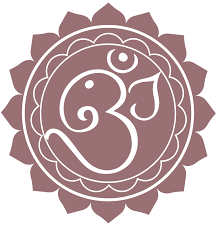
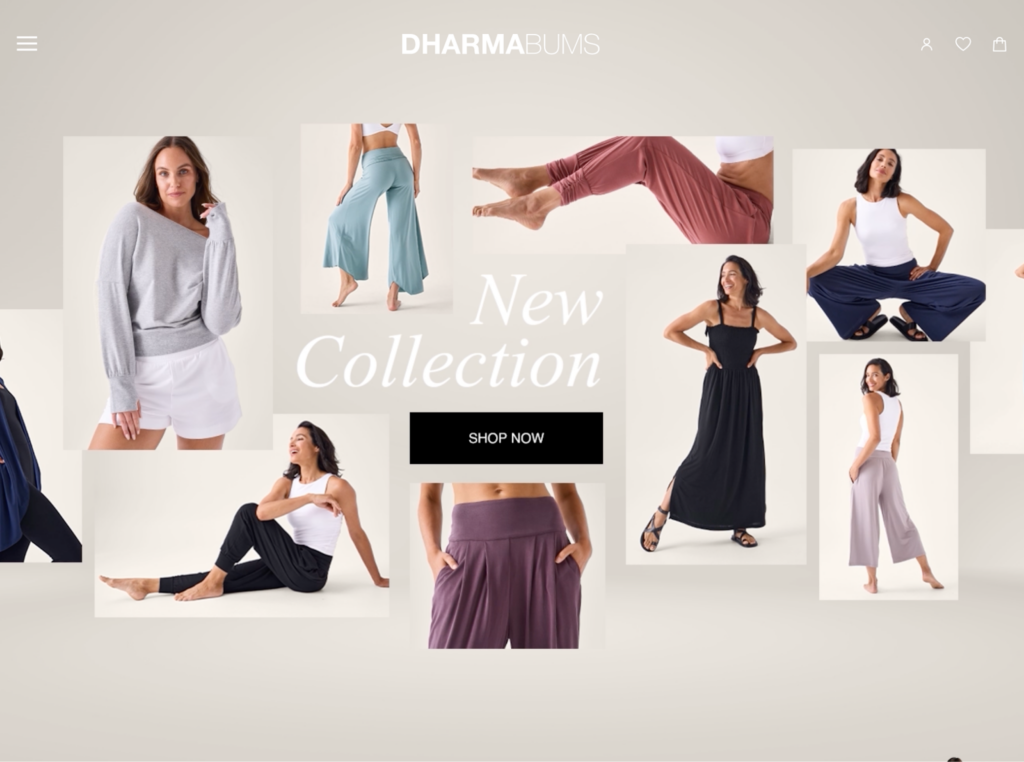
“We try to set ourselves apart by focusing on making every garment design and print as unique and timeless as possible.”
Dharma Bums
🌎
How do they ensure their sustainability?
Dharma Bums ensures sustainability by making long-lasting multifunctional pieces based on high-performance, low-impact materials, including recycled polyester and Lenzing’s modal. Firstly, regarding performance, their fabrics are engineered to achieve smooth movement and comfort while engaging in various activities. For example, their Seamless fabric is designed to have high durability, moisture-wicking ability, and four-way stretch, making it soft yet supportive for yoga or gym workouts. Secondly, regarding impacts, all their fabrics are certified under the Bluesign® system, ensuring that harmful substances are eliminated at each step throughout the supply chain. On top of that, 30% of all their products are OEKO-TEX® MADE IN GREEN certified. Beyond textile materials, Dharma Bums also opts for eco-friendly packaging materials. Their garment and mailer bags are made from 100% sustainably sourced plant-based fibers, suitable for home composting at the end of their life. Their pledge to sustainability goes beyond our fabrics and designs as they strive to have a minimal footprint across their entire business. For example, they recycle offcuts into stuffing for boxing bags, diverting away from landfills.
🌐
How do they ensure their ethics?
Dharma Bums is committed to ethical labor practices and animal welfare. Their manufacturing partners follow ethical practices aligning with the social auditing and reporting framework of the Business Social Compliance Initiative (BSCI). They also trace most of their supply chain and ensure payment of a living wage in the final stage of production. Regarding animal welfare, they don’t use any animal products, as their entire product range is vegan.
🤝
Are they part of any giving-back programs?
Dharma Bums is not known to be part of any giving-back programs.
🛍️
What is their product range?
- Best for: womenswear
- Product range: bottoms, tops, shorts, dresses, jumpsuits, maternity
- Price range: $$
- Size range: XS–4XL
Why Is It Important to Buy Products Made of More Sustainable Fabrics
It is important to buy products made of more sustainable fabrics because a sustainable textile industry has a lower carbon footprint, helps save natural resources, and is better for forests, animals, and humans.
Buying Sustainable Fabrics Reduces Your Carbon Footprint
The production of clothing and footwear is estimated to contribute 10% of global greenhouse gas emissions—more than all international flights and shipping combined. If the fashion industry were a country, it would be the fourth largest emitter of carbon dioxide.
One way to reduce the carbon footprint of the clothes you buy is to opt for sustainable fabrics. Sustainable fabrics, which are often made with natural or recycled fibers, have relatively low carbon footprints compared to petroleum-based fabrics. For example, organic cotton made in the US has a carbon footprint of 2.35 kg CO2 (per ton of spun fiber)—a quarter of polyester’s carbon footprint.
Buying Sustainable Fabrics Reduces Demand For Natural Resources and Waste Management
The textile industry uses water and land to grow cotton and other fibers. It is estimated that 79 billion cubic meters of water were used for the sector worldwide in 2015. For example, producing a single cotton T-shirt requires as much water as one person drinks for 2.5 years (2,700 liters of fresh water).
Worse yet, the textile economy is vastly more linear than circular: the largest amount of resources used in clothes ended up in landfills (instead of being recycled to remake clothes). According to a report by the Ellen MacArthur Foundation,
- Less than 3% of materials used in the textile economy in 2015 came from recycled sources.
- In other words, more than 97% of resources used in making clothes are newly extracted.
When clothing items are disposed of within a short period of time—under a year in the case of half of the fast fashion clothes—the natural systems that provide raw materials for fabrics don’t have enough time to recover and regenerate, which could lead to ecological breakdown.
Sustainable fabrics are made with less water and emissions while lasting longer:
- Because they are durable, you don’t need to buy new clothes too often.
- Thus, you help reduce the pressure to extract more resources for making new items.
Similarly, making and consuming sustainable fabrics made with recycled materials reduces the demand for virgin materials while helping tackle waste management.
Buying Sustainable Fabrics Encourages Sustainable Management of Forests
Sustainable natural fiber fabrics are made with raw materials from forests and plantations that are sustainably managed, such as complying with FSC standards.
When you buy sustainable natural fiber fabrics, you discourage unsustainable forestry practices like illegal logging. You can help reduce deforestation, biodiversity loss, and the effects of climate change.
Buying Sustainable Fabrics Encourages Fairer Treatment of Animals
The fashion industry is rife with animal mistreatment when it comes to making animal-based fabrics like wool or silk. Every year, billions of animals suffer and die for clothing and accessories.
Buying sustainable vegan alternatives can help to reduce the pressure on raising more and more animals to meet the demand for animal-based fabrics while sacrificing their well-being and lives.
Suppose you have to buy fabrics made with, for example, wool or silk; make sure you only choose brands committed to cruelty-free products. In that case, you help advocate better treatments for animals raised within the textile industry.
Using Sustainable Fabrics Encourages Fairer Treatment of Textile Workers
Recent statistics from UNICEF estimated as many as 170 million child laborers worldwide, many of whom were engaged in some form of work in the textile industry. They don’t get paid minimum wages and often work long hours.
When you buy sustainable fabrics from brands transparent about the working conditions at their factories, you discourage the use of child labor and help promote better working conditions for textile workers.
How Can You Generally Buy More Sustainable Fabrics
The key to sustainably buying fabrics is to check on relevant environmental and original certifications.
For natural fabrics:
- Global Organic Textile Standard (GOTS): A globally recognized certification system that ensures a certain threshold of organic content has been met. It covers manufacturing, packaging, labeling, transportation, and distribution (but not what happens in the fields where crops are grown).
- USDA Certified Biobased Product: The USDA BioPreferred® Certification is a voluntary certification offered by the United States Department of Agriculture. The certification identifies products made from plants or other renewable materials.
- Ecolabel: Ecolabel is the official European Union voluntary label recognized worldwide for certified products with a guaranteed, independently verified low environmental impact. The label requires high environmental standards throughout the entire life-cycle: from raw material extraction through production and distribution to disposal. It also encourages companies to develop innovative, durable, easy-to-repair, and recyclable products.
For natural fiber semi-natural/semi-synthetic fabrics:
- Forest Stewardship Council: An FSC certification ensures that the wood (or wood-like material) comes from responsibly managed forests that provide environmental, social, and economic benefits.
There are two types of FSC Certification:- FSC Forest Management Certification, with a focus on the origin of the wood—the forest.
- FSC Chain of Custody Certification, which focuses on the path from the forest to the customer’s home.
- Program for Endorsement of Forest Certification: PEFC’s approaches to sustainable forest management are in line with protecting the forests globally and locally and making the certificate work for everyone. Getting a PEFC certification is strict enough to ensure the sustainable management of a forest is socially just, ecologically sound, and economically viable but attainable not only by big but small forest owners.
For recycled fabrics:
- Recycled Claim Standard (RCS): The Textile Exchange RCS was originally developed as an international, voluntary standard that sets requirements for third-party certification of Recycled input and chain of custody.
- The Global Recycled Standard (GRS): The Global Recycled Standard (GRS) is an international, voluntary, full product standard that sets requirements for third-party certification of Recycled Content, chain of custody, social and environmental practices, and chemical restrictions. It can be used for any product with more than 20% recycled material.
For all types of fabrics:
- STeP by OEKO-TEX®: STeP by OEKO-TEX® is an independent certification system for brands, retailers, and manufacturers from the textile and leather industry. It communicates organizational environmental measures, including reducing carbon footprint and water usage.
- OEKO-TEX® Standard 100: OEKO-TEX® labels aim to ensure that products pose no risk to human health (i.e., containing banned chemicals).
Some certifications that are signaling brands’ efforts toward lowered environmental impacts and a circular economy are:
- B Corp Certification: The label B Corp is a certification reserved for for-profit companies. Certified holders are assessed on their social and environmental impacts.
- Cradle2Cradle certification: Cradle2Cradle provides a standardized approach to material circularity. It assesses whether products have been suitably designed and made with the circular economy in mind covering five critical categories: material health, material reuse, renewable energy and carbon management, water stewardship, and social fairness.
Final Thoughts
Athleisure is a versatile sportswear category that can be used in various casual and formal settings. The existence of athleisure could mean reducing the amount of clothing pieces one would need and, consequently, cutting down textile waste. Unfortunately, fast fashion could result in athleisure garments having a high negative impact. Thus, it is important to shop with ethics and sustainability in mind when choosing your next crop top or pair of joggers.
By purchasing athleisure from brands that commit to sustainability, you support their mission to create a fairer and less harmful textile industry for all lives on Earth.
Here is the list (again) of the most sustainable athleisure brands:
- Girlfriend Collective
- MATE The Label
- Adidas by Stella McCartney
- Wolven
- PANGAIA
- Tripulse
- Pact
- Happy Earth Apparel
- Silou
- Dharma Bums
To make your use of these clothing items even more sustainable, follow these steps:
- Buy recycled or upcycled athleisure made with low-impact materials.
- Keep your athleisure for as long as possible.
- At the end-of-life of your athleisure, upcycle the materials to extend their usage and arrange for them to be recycled or properly disposed of.
Stay impactful,

Sources
- Science Direct: Life-cycle assessment (LCA)
- Girlfriend Collective: Home
- MATE the Label: Home
- Adidas by Stella McCartney: Home
- Woven: Home
- PANGAIA: Home
- Tripulse: Home
- Pact: Home
- Happy Earth Apparel: Home
- Silou: Home
- Dharma Bums: Home
- Girlfriend Collective: About
- Girlfriend Collective: How is your recycled fabric made?
- Girlfriend Collective: Is everything eco-friendly?
- Girlfriend Collective: The Microfiber Filter
- Girlfriend Collective: Recycle. Reuse. Regirlfriend
- EcoCart: Home
- Girlfriend Collective: Are you carbon neutral
- Good On You: Brand Directory | Girlfriend Collective
- SA8000 Standards: Home
- MATE the Label: MOVE by MATE
- MATE the Label: Sweatpants
- Good On You: Brand Directory | MATE the Label
- MATE the Label: Linen
- MATE the Label: Hemp
- MATE the Label: Climate-beneficial cotton
- MATE the Label: Materials
- MATE the Label: Carbon footprint
- MATE the Label: Dress Clean
- B Corporation: MATE the Label
- CLIMATE NEUTRAL: MATE the Label
- MATE the Label: 2021 Impact Report
- Stella McCartney: adidas by Stella McCartney
- Stella McCartney: Sustainability
- Stella McCartney: Circularity
- Good On You: Brand Directory | Stella McCartney
- Global Organic Textile Standard (GOTS): Home
- Stella McCartney: Organic cotton
- Stella McCartney: Recycled cashmere
- Stella McCartney: BananaTex®
- Stella McCartney: VEGEA
- Stella McCartney: Mylo™
- Stella McCartney: MIRUM®
- Stella McCartney: TruePace Running All-in-One
- Stella McCartney: Traceability and Blockchain Technology
- Stella McCartney: Metals
- Stella McCartney: Spotlight on Airslide
- Stella McCartney: Paper and Packaging
- Stella McCartney: Clevercare
- Stella McCartney: Measuring our impact
- Ethical Trading Initiative: Home
- Stella McCartney: Charities
- Million Trees Miami: Home
- Naked Heart Foundation: Home
- Meat Free Monday: Home
- Sea Shepherd: Home
- Good On You: Brand Directory | Wolven
- Wolven: Turmeric Active Top
- Wolven: 2023 Impact Report
- Impactful Ninja: How Sustainable Are Recycled Polyester Fabrics? A Life-Cycle Analysis
- Impactful Ninja: How Sustainable Are Spandex Fabrics? A Life-Cycle Analysis
- Impactful Ninja: How Sustainable Are Elastane Fabrics? A Life-Cycle Analysis
- Impactful Ninja: How Sustainable Are Recycled Fabrics? A Life-Cycle Analysis
- Textile Exchange: Global Recycled Standard
- OEKO-TEX: OEKO-TEX STANDARD 100
- CHANGE CLIMATE: Wolven is Climate Neutral Certified
- Good On You: Brand Directory | Wolven
- Treet: Wolven Pre-Loved
- Intertek: Home
- LinkedIn: Wolven
- Wolven: Neutral Collection
- Climate Neutral: Home
- CleanHub: Home
- PANGAIA: Sustainable Activewear For Women
- PANGAIA: Innovative Materials and Systems
- PANGAIA: PREFERRED MATERIAL LIST 2022
- PANGAIA: Impact Report 2022
- PANGAIA: Organic Cotton | Plant Fibers
- Impactful Ninja: How Sustainable Are Hemp Fabrics? A Life-Cycle Analysis
- Impactful Ninja: How Sustainable Are Kapok Fabrics? A Life-Cycle Analysis
- PANGAIA: Recycled Cashmere | Earth Positive Fabrics
- PANGAIA: Science & Innovative Hub
- PANGAIA: FLWRDWN™
- PANGAIA: FRUTFIBER™
- PANGAIA: MIRUM®
- PANGAIA: AIR INK®
- PANGAIA: miDori® bioWick
- PANGAIA: COLORFIX
- PANGAIA: Code of Conduct
- Good On You: Brand Directory | PANGAIA
- PANGAIA: Diversity and Inclusion Statement
- PANGAIA: Modern Slavery Statement
- PANGAIA: Child Labour & Young Workers Policy
- PANGAIA: Human Rights Policy
- PANGAIA: Giving back
- 1% for the Planet: Home
- Tripulse: Materials & Trims
- Tripulse: WE’RE CLIMATE NEUTRAL CERTIFIED FOR 2023!
- Tripulse: Climate Action
- Good On You: Brand Directory | Tripulse
- Impactful Ninja: How Sustainable Are TENCEL Fabrics? A Life-Cycle Analysis
- ASAHI KASEI: ROICA
- THE SLOW LABEL: The problem with Elastane: ROICA™ V550 is an alternative
- Impactful Ninja: How Sustainable Are Spandex Fabrics? A Life-Cycle Analysis
- Impactful Ninja: How Sustainable Are Elastane Fabrics? A Life-Cycle Analysis
- Bluesign: Home
- European Union: REACH Regulation
- Impactful Ninja: How Sustainable Are Organic Cotton Fabrics? A Life-Cycle Analysis
- Tripulse: Design Philosophy
- Tripulse: Packaging and transportation
- Tripulse: OUR WAY TO ZERO WASTE
- Tripulse: ZeroWaste Shop
- Global Organic Textile Standards: Home
- Tripulse: Ethical & transparent supply chain
- Tripulse: WHY WE PLANT TREES WITH EVERY PRODUCT PURCHASED
- One Tree Planted: Home
- Good On You: Brand Directory | Iron Roots
- Impactful Ninja: How Sustainable Are Cotton Fabrics? A Life-Cycle Analysis
- Impactful Ninja: How Sustainable Are Hemp Fabrics? A Life-Cycle Analysis
- Lenzing: Home
- Impactful Ninja: 10 Most Sustainable Fabrics: The Full Life-Cycle Analysis
- Pact: Women’s Organic Cotton Leggings
- Pact: Women’s Organic Cotton Tops and Shirts
- Good On You: Brand Directory | Pact
- VelaTM paper bags: Home
- Pact: Responsible Packaging
- SimpliZero: Home
- Pact: Sustainability, Certified
- Pact: Give Back Box
- Happy Earth Apparel: PlantTecTM athleisure
- B Corporation: Happy Earth Apparel
- Happy Earth Apparel: About Us
- Good On You: Brand Directory | Happy Earth Apparel
- Happy Earth Apparel: Organic socks
- Impactful Ninja: How Sustainable Are Elastane Fabrics? A Life-Cycle Analysis
- Change Climate: Happy Earth LLC | A Climate Neutral Certified Brand
- Happy Earth Apparel: Supporting Carbon Emissions Reduction
- Happy Earth Apparel: Code of Conduct
- International Labor Organization (ILO): Fundamental Principles and Rights at Work
- Worldwide Responsible Accredited Production: Home
- Happy Earth Apparel: Tree Planting
- Silou: Women’s Leggings
- Good On You: Brand Directory | Silou
- Silou: BCI Cotton
- Silou: TENCELTM
- Silou: ECONYL®
- Silou: Sustainability Credentials
- Dharma Bums: Sustainability
- Lenzing: Home
- Impactful Ninja: How Sustainable Are Modal Fabrics? A Life-Cycle Analysis
- Dharma Bums: Our Fabrics
- Bluesign: Home
- OEKO-TEX: OEKO-TEX MADE IN GREEN
- Good On You: Brand Directory | Dharma Bums
- Dharma Bums: Ethics
- AMFORI: BSCI
- European Parliament: The impact of textile production and waste on the environment (infographic)
- Science Direct: The challenge of “Depeche Mode” in the fashion industry – Does the industry have the capacity to become sustainable through circular economic principles, a scoping review
- Science Direct: Carbon Footprint of Textile and Clothing Products
- European Parliament: Environmental impact of the textile and clothing industry
- European Parliament: What if fashion were good for the planet?
- Ellen MacArthur Foundation: A New Textiles Economy: Redesigning fashion’s future
- McKinsey: Style that’s sustainable: A new fast-fashion formula
- Forest Stewardship Council: Home
- Our World in Data: Deforestation and Forest Loss
- Our World in Data: Renewable Energy
- Peta: Animals Used For Clothing
- The Guardian: Child labour in the fashion supply chain
- Impactful Ninja: How Sustainable Are Natural Fabrics? A Life-Cycle Analysis
- Global Organic Textile Standard (GOTS): Home
- BioPreferred: WHAT IS THE BIOPREFERRED PROGRAM?
- European Commission: Environment | EU Ecolabel
- Impactful Ninja: How Sustainable Are Semi-Natural/Semi-Synthetic Fabrics? A Life-Cycle Analysis
- Forest Stewardship Council
- FSC Forest Management Certification
- FSC Chain of Custody Certification
- Textile Exchange: The RCS and GRS are designed to boost the use of recycled materials
- Program for Endorsement of Forest Certification
- Impactful Ninja: How Sustainable Are Recycled Fabrics? A Life-Cycle Analysis
- Textile Exchange: Recycled Claim Standard
- Textile Exchange: Global Recycled Standard
- OEKO-TEX: Certification according to STeP by OEKO-TEX®
- OEKO-TEX: OEKO-TEX® Standard 100
- B Corp Certification: Home
- C2CCertified: Home






